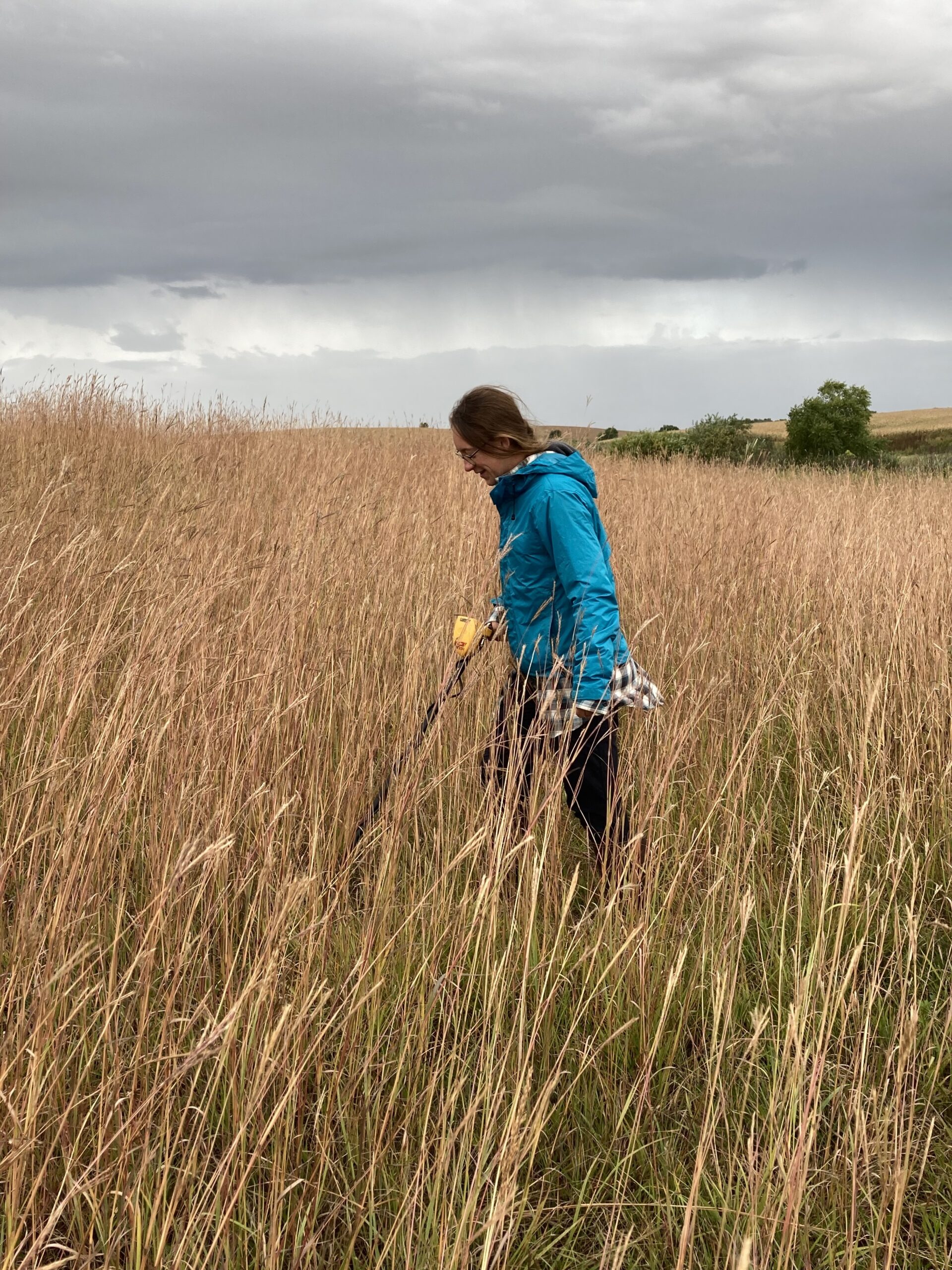This recruitment experiment was originally established in 2000 to quantify seedling emergence and juvenile survival of Echinacea angustifolia during its reintroduction to sites with varying land-use history and burn schedules. Before 2014, we collected detailed data on each plant in the plots. Since 2014, Team Echinacea has censused each plot yearly to collect demographic data for every flowering plant.
In 2022, Team Echinacea visited 9 recruitment plots and searched for 168 Echinacea angustifolia plants that had flowered previously. Across the 9 plots, we found 76 basal plants and 126 flowering plants, and we were unable to find 14 plants. Of the flowering plants, 35 plants flowered for the first time in 2022. It was a high flowering year! For each flowering plant, the team collected demographic data (number of rosettes and flowering heads) and shot a GPS point at the exact location of the plant.
There was at least one flowering Echinacea plant at each of the 7 recruitment plots where plants had flowered previously. We also visited 2 recruitment plots at Hegg Lake WMA, a site managed by the Minnesota DNR, where the Echinacea had never flowered in the past. At Hegg West, we discovered a new flowering plant with 7 heads! At these two sites, we used a metal detector to find the nails marking the plot boundaries. We mapped the corners of the plots with the GPS so they will be easier to locate next year. The 6 recruitment plots at Hegg Lake WMA contained a total of 103 flowering plants, Eng Lake WMA had 16 flowering plants, and Kensington WMA had 7 flowering plants in 2022.
- Start year: Plantings in 2000-2002
- Location: Seven study plots on state land with different land use histories: old-field and restored grassland
- Overlaps with: Demographic census in remnants
- Data collected:
- Plant status (basal, flowering, not present), rosette count, flowering head count, GPS point for each flowering plant in each recruitment plot
- Recruitment plot demography and survey data are stored in demap
- Samples or specimens collected: NA
- Products: A paper (Wagenius et al. 2012) published in Restoration Ecology
You can read more about the fire in recruitment experiment, as well as links to prior flog entries about this experiment, on the background page for this experiment.


Leave a Reply